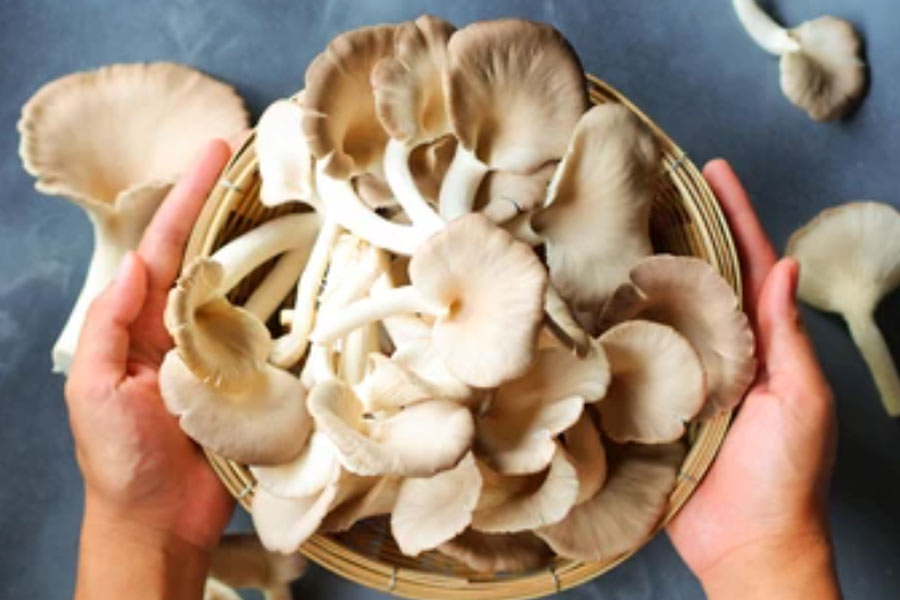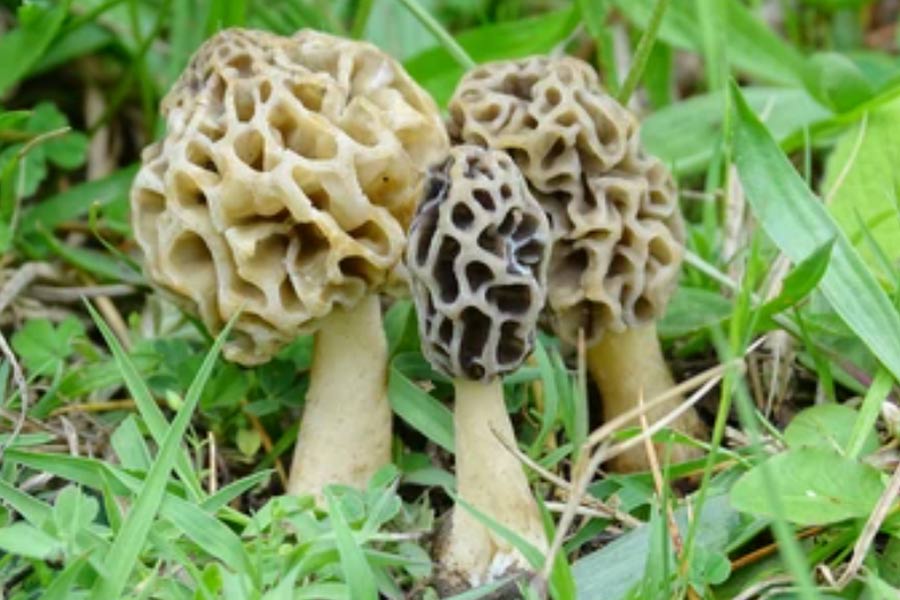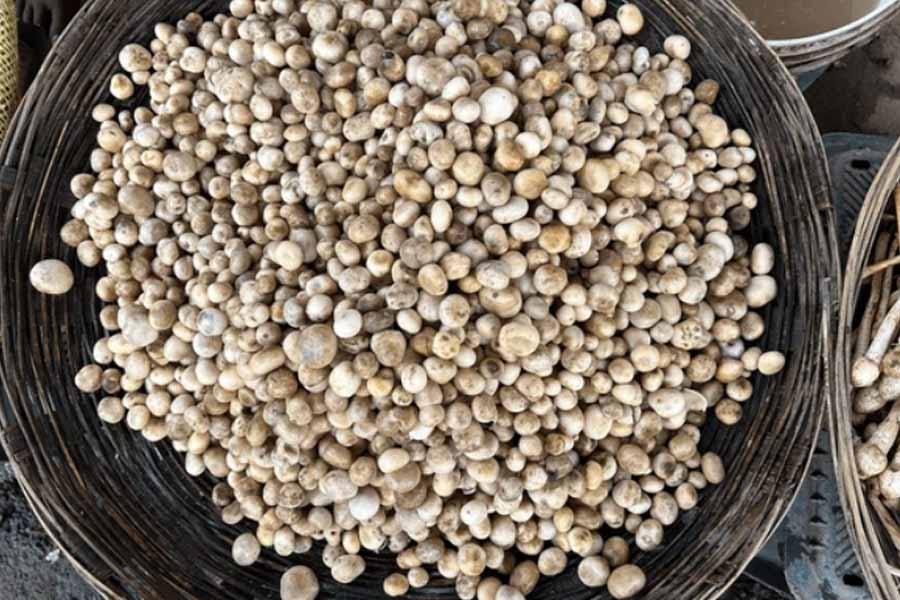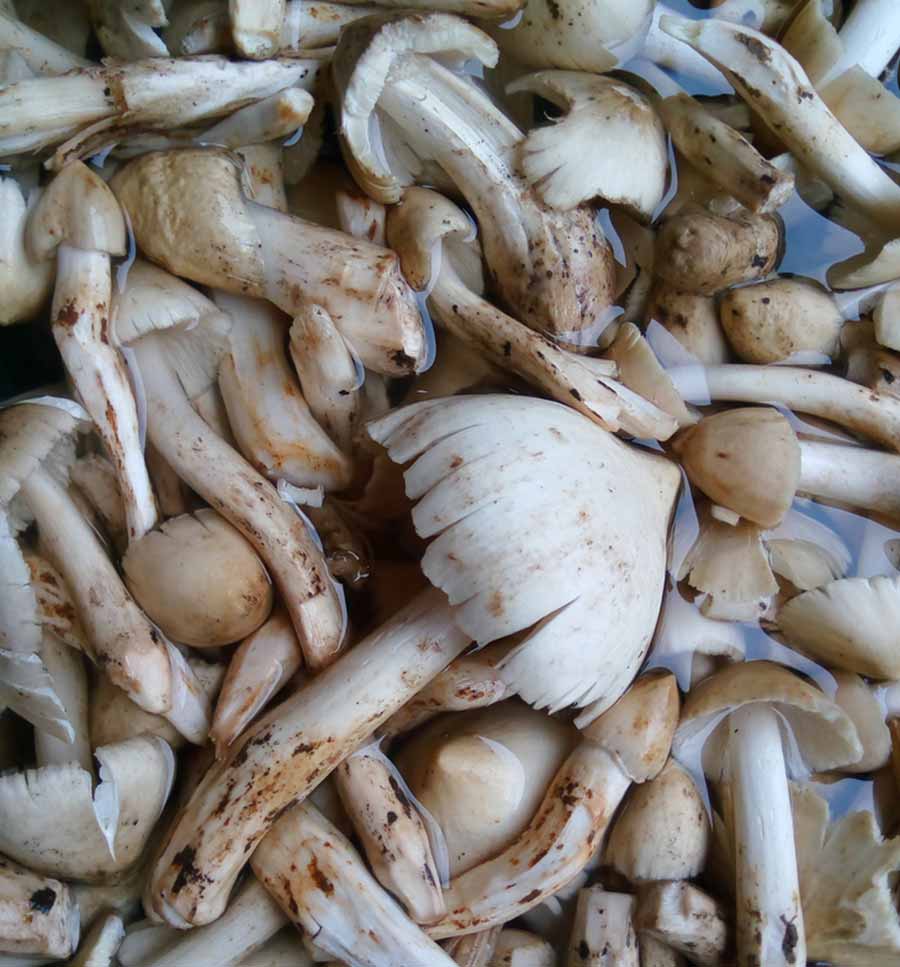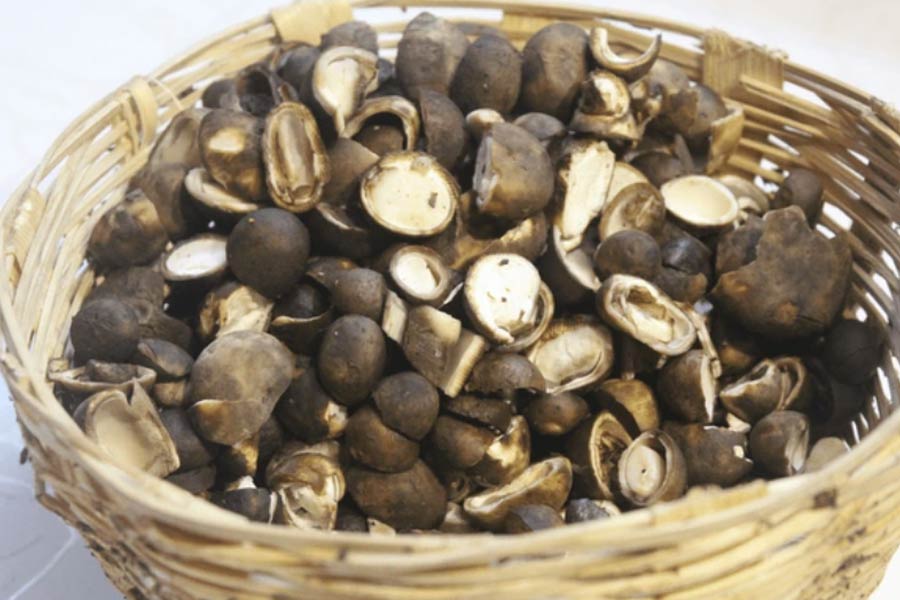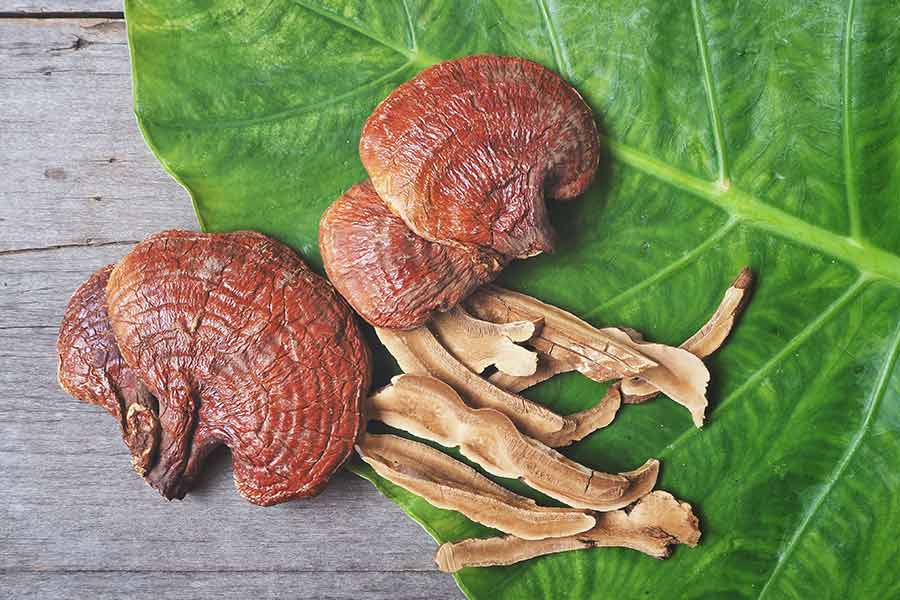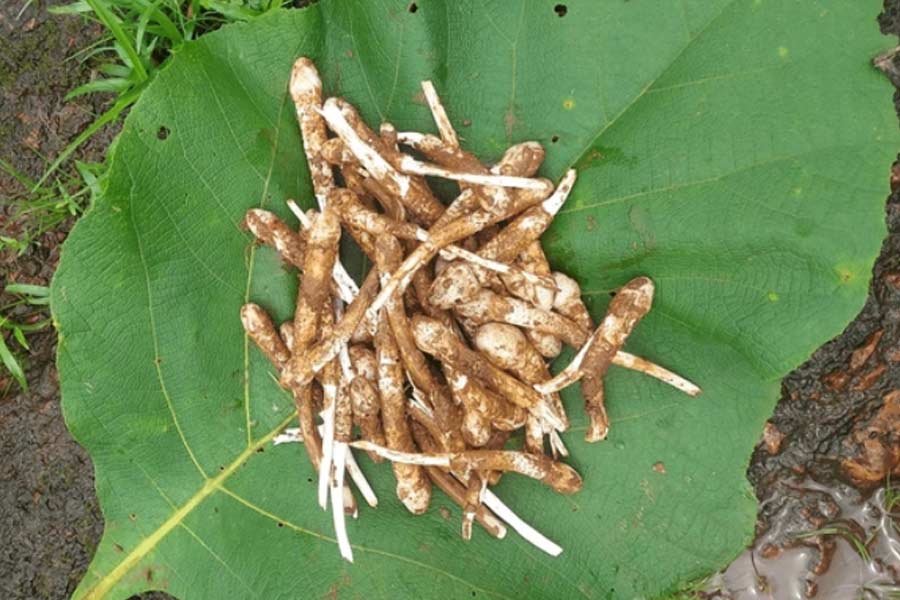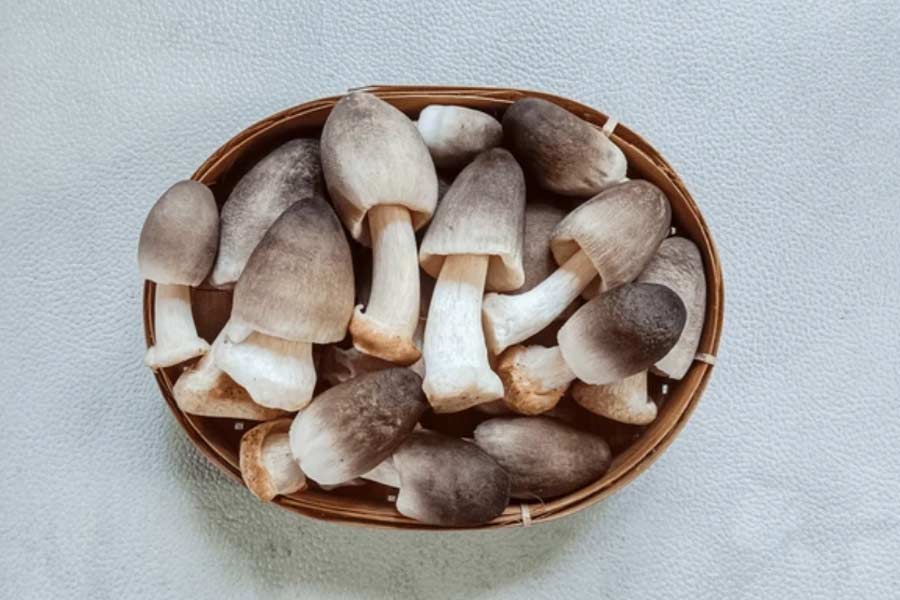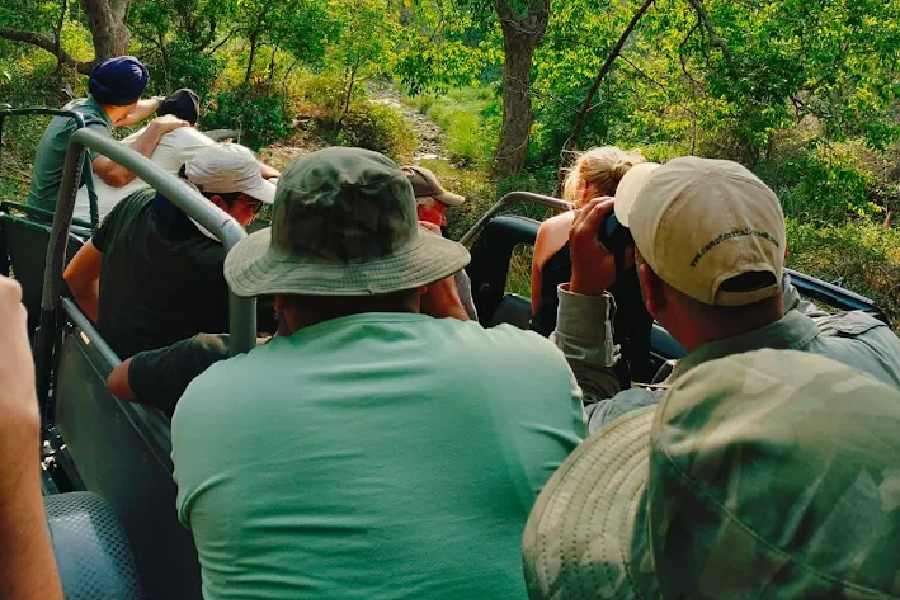Monsoon in India brings with it a variety of regional mushrooms — these mostly grow in the wild — that have become a part of India’s culinary culture over the past decades.
From the Guchhi in the north to the Rugda in Jharkhand, these seasonal delicacies — even though they are hard to source — are a fascinating part of India’s culinary landscape.
Here are some of India’s monsoon mushrooms you must try.
Gucchi from the Himalayas
Gucchi, wild Himalayan morels (Morchella esculenta), emerge in spring shortly after snowmelt, around March and April. Their honeycomb caps impart an earthy, nutty flavour, ideal for creamy risottos or delicate pasta sauces.
Rugda from Jharkhand
Rugda (Lycoperdon/Calvatia species), also called Putu, emerges during early monsoon in Jharkhand’s forests (June–July). It’s treasured locally as a vegetarian alternative to meat. Commonly cooked with mustard oil, onions, and spices, it is enjoyed with rice by the locals.
Durga Chatu from Bengal
Durga Chatu appears just before or during Durga Puja (September), heralding monsoon’s end in Bengal. It’s often made into a spicy posto (poppy-seed) mushroom curry, Durga Chatu Posto, combining mushrooms with poppy paste, green chillies, and mustard oil. It is wild-harvested and sold in local markets for short periods.
Phutki or Bhutki Chyau from Terai region of Nepal and India
Phutki, also known as Bhutki Chyau, is a puffball-like mushroom found in the Terai region of India and Nepal, especially in fields after wheat is harvested and burned. It appears during pre-monsoon showers around April and May. It is commonly cooked with potatoes in a dry stir-fry. Due to its delicate nature and specific growing conditions, it is not cultivated commercially and is rarely available online. It is mostly sold in local haats and rural markets.
Asina Chattu from Odisha
Similar to Durga Chatu, Asina Chattu is a wild mushroom variety found in Odisha during the monsoon season, particularly from July to September. With a firm texture and a slightly sweet, nutty flavour, it is commonly cooked in mustard and dried mango Ambula-based curries that are locally called Chatu Besara. It forms an important part of seasonal Odia cuisine. These mushrooms are typically harvested from forests and not commercially cultivated, so they are only sold in local markets.
Lingzhi from northeast India
Lingzhi, also known as Ganoderma lucidum or reishi, grows in the forests of northeast India during late summer and early autumn. Known for its medicinal properties, it is not used in cooking but steeped in water to make herbal tea or consumed as a powdered supplement. It has a woody texture and a slightly bitter taste. Lingzhi mushrooms are widely available online in dried or powdered form through various health and wellness platforms.
Ant-Hill mushroom from Maharastra, Goa, Madhya Pradesh
Ant-hill mushrooms, or Termitomyces, grow on termite mounds during the first heavy monsoon rains, typically June to July. These mushrooms are known for their long stems, meaty texture, and mild umami flavour. In local cuisines of Goa and Maharashtra, they are used in spicy curries. They are difficult to cultivate and are foraged by hand, which limits availability to local markets.
Straw Mushroom from eastern and coastal regions
Straw mushrooms (Volvariella volvacea) are widely cultivated during the summer months on rice straw in warm, humid climates. These mushrooms have a delicate texture and mild taste, making them ideal for stir-fries, soups, and curries. They are especially popular in Chinese and southeast Asian cooking. Straw mushrooms are commonly available both fresh and canned, and can be ordered online through grocery and food delivery platforms across India.
